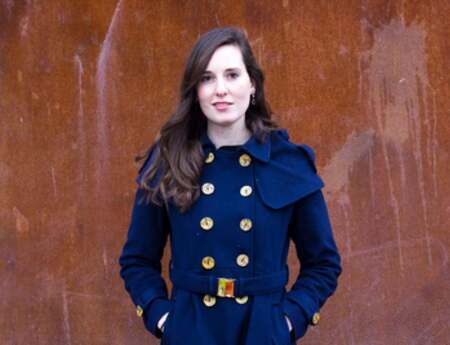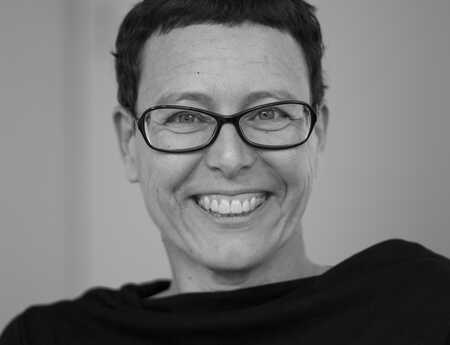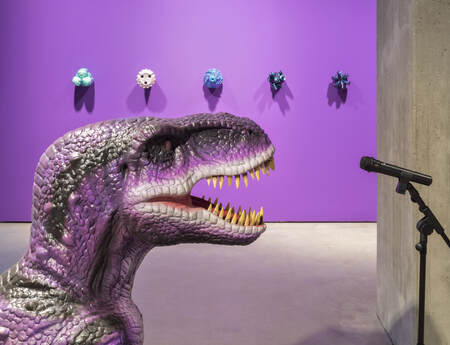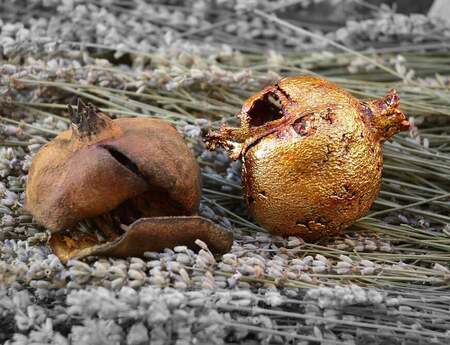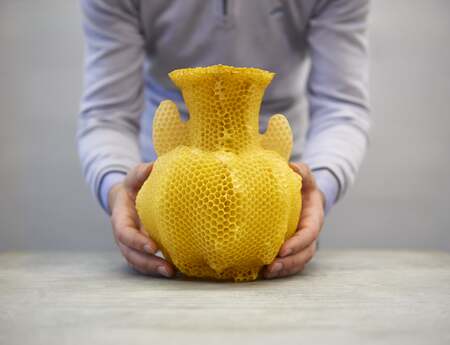To Almost Touch Life
The tree of life, your first life line, or, in other words, the placenta. Strangely enough, this organ is quite under-researched, even-though it plays a vital role in the development of human life. The Swiss artist Farah Widmer recently made this highly influential organ the centre of her project Moederkoek (2024). Her ceramic placentas come in all shapes and sizes, with amazing colourful glazes ranging from bright red to deep purple, pointing to the variation of small and big and thick and thin placentas.
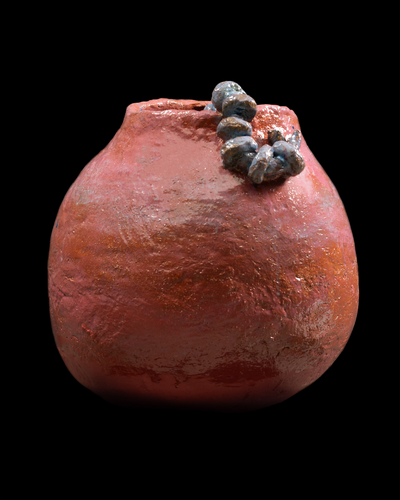
Another recent sculpture by the Dutch artist Femmy Otten also alludes to this mysterious organ. Her work Mother (2024) sits in the middle of a fountain in Oostende (Belgium), a statue of an elegantly pregnant woman who has a strange mesh of body parts at her feet. This heap is the signature style of the artist, but in this particular context, it alludes to the development of growing body parts inside her belly. Both works play with the interconnectedness of the placenta through touch and distance and what is revealed and what stays hidden.
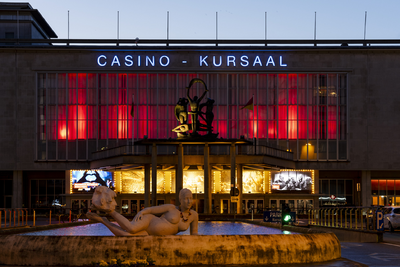
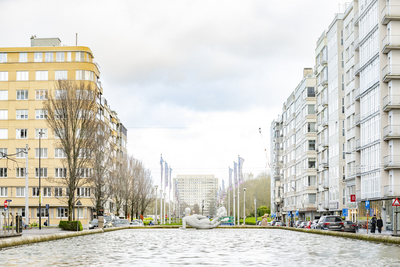
The placenta is often seen as an afterthought and, as a matter of fact, is referred to as an afterbirth. Recently, it has become en vogue to bury the placenta in the garden and grow a tree on it, as the placenta is thought to make the ground fertile. Or you can make capsules of it that the mother can consume during the breastfeeding period, with the idea that it would give her the appropriate amount of nutrition. Still, in the West, it is most common to toss the placenta directly in the bin.
A treasure chest of thrown-away gems
Through her sculptures, Widmer has turned her placentas into a treasure chest of gems. Some works show the intrinsic pattern of veins that lead from the umbilical cord spread over a big oval shape; others show the other side of the placenta with its meaty sponges that cling to the womb. Just looking at them sparks interest in how the body can produce such a complex organ that, in its turn, creates a human being. One just cannot resist touching these smooth, cold objects that resemble but feel so different from the actual warm, fleshy organ that glides out after birth.
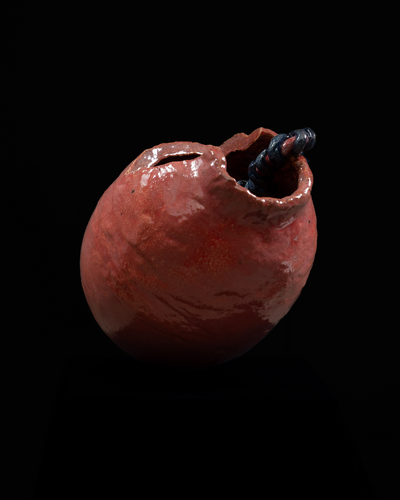
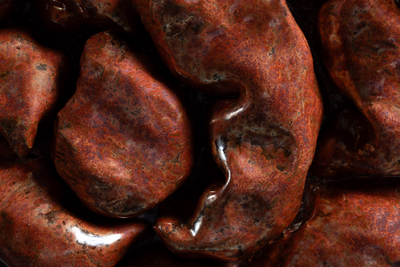
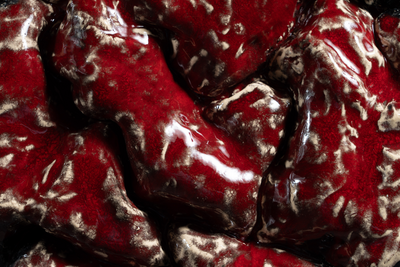
By elevating the placenta to an art object, Widmer shows the importance of the organ in our creation. The placenta is intertwined with life right after conception; as cells split, half of them become the embryo and the other half the placenta. Later on in pregnancy, the placenta and umbilical cord are the first things foetuses touch and play with.
However, little is known about this temporary organ, which helps develop and ripen the organs of the foetus, such as the heart, intestines, and lungs. This might be the reason that Widmer shows the placenta to us, as most people usually perceive it; after it has left the mother’s body. It has become a lifeless object. There are even a couple of works that show the ceramic placenta in a vessel, referring to how, in our society, we tend to throw away objects that we deem to have served their purpose. However, the umbilical cord is still hanging out like a snake, luring you in to take a closer look and even reach your hand in.
A distant goddess of creation
With Mother by Otten, we are kept at a distance, even if people’s first primal instinct is to rub the big round white marble belly of the pregnant woman, as it is placed in the middle of fountain in the coastal town of Oostende in Belgium. The artwork alludes to classical marble sculptures of nude females, but with a twist of pregnancy, as there are few pregnant women represented in art history.
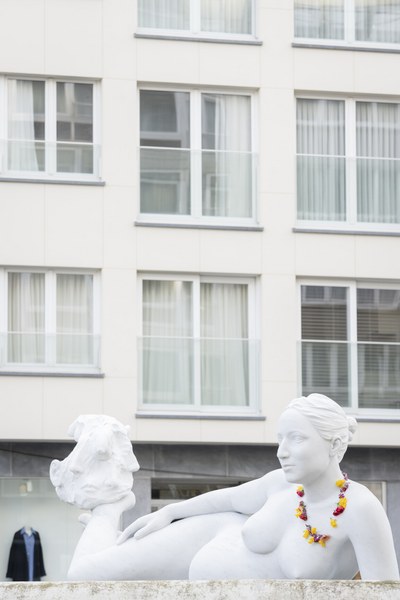
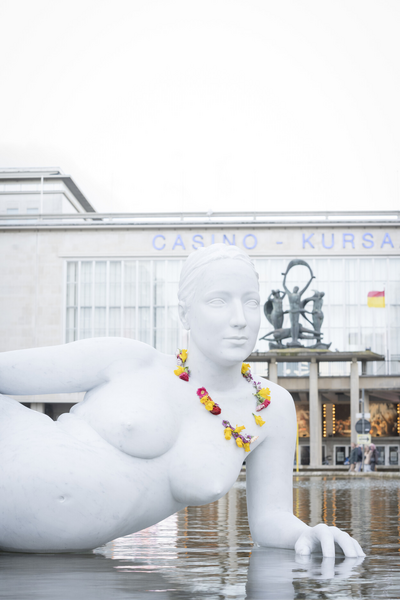
These nude sculptures are often made by men and are sexually explicit, referring to the Greek goddess of beauty and love. Otten attempts to strip her sculpture of the erotic connotation of this figure, but still, the referral to Aphrodite stands as she is the goddess of fertility as well. So Otten is placing a pregnant woman on a pedestal like a goddess as an untouchable creature, but she also exposes the pregnant woman, showing her unabashedly in her nakedness. This stands in stark contrast to the famous Venus Pudica types that cover their private parts and breasts with their hands.
Perhaps the mysterious ball with protruding ears, noses, mouths, and penises at her feet is the most puzzling part of the sculpture. These body parts that have been carved from marble seem to still be struggling to come out and take their final shape. Here, Otten is referring to herself as an artist as well as a mother, as she worked on a wooden version of the sculpture during the whole term of her pregnancy. She is not only referring to Aphrodite but also to Pygmalion and Galathea, a myth about a sculptor who falls in love with his statue that comes to life. In this sense, Otten’s sculpture connects both the mother and artist as creators and distances itself from the dominant Western idea of men being the ultimate creators.
The ball at the feet of Otten’s sculpture displays the same as what is happening in the pregnant woman’s belly. It is only out of our sight, and this might reveal our inclination to touch the swelling belly and feel what is within. Just as we want to let our fingers glide over the web of veins in Widmer’s inanimate placentas in which fascinating things have happened to make life possible. With this act we longingly attempt to near ourselves to the mysterious creation of life. But as the artworks show both in their own way, this longing is just out of reach.
The article was written by Sietske Roorda in English.

